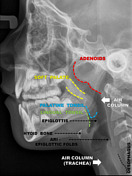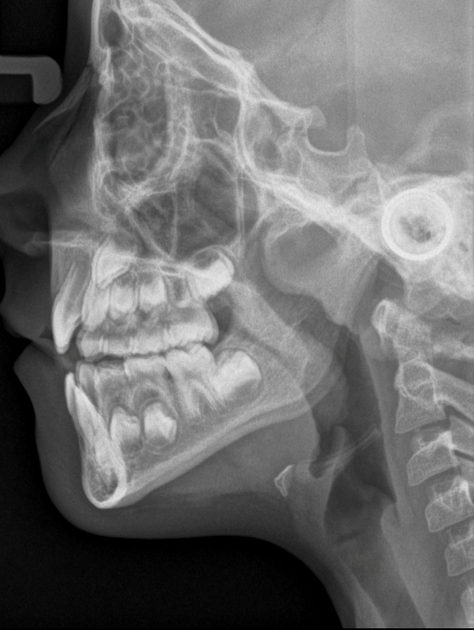Presentation
Rhinorrhea, difficulty nasal breathing, chronic cough, snoring, and sleep-disordered breathing.
Patient Data



Enlarged adenoids (red line) and narrowing of the nasopharyngeal airway (white arrow). The lateral neck x-ray is the main imaging study & adenoids greater than 12-15mm should be considered abnormal.
Case Discussion
Adenoid hypertrophy and associated symptoms of children are a common condition in pediatrics. Nasopharyngeal obstruction caused by adenoid hypertrophy may lead to several other diseases and symptoms such as snoring, obstructive sleep apnea syndrome, hyponasal speech, acute otitis media, otitis media with effusion, acute sinusitis & feeding problems.




 Unable to process the form. Check for errors and try again.
Unable to process the form. Check for errors and try again.